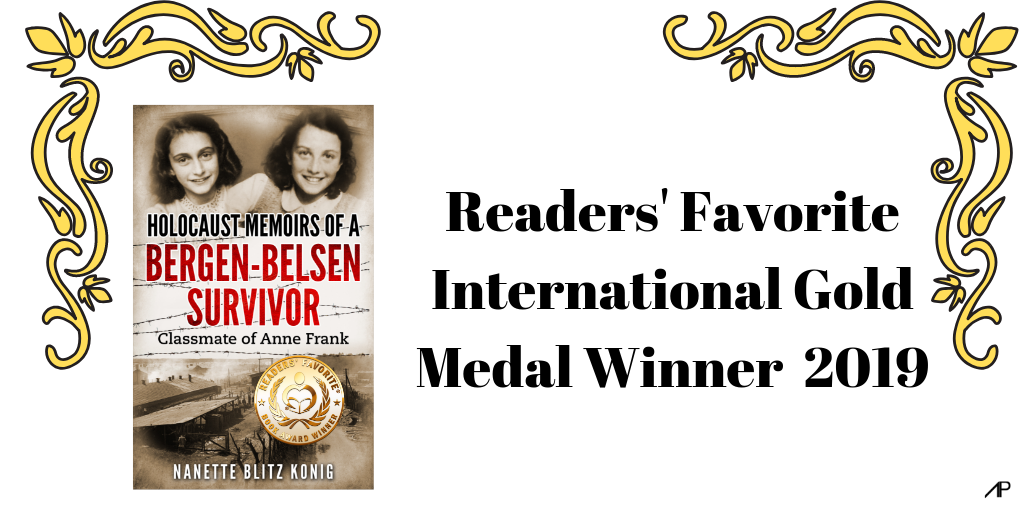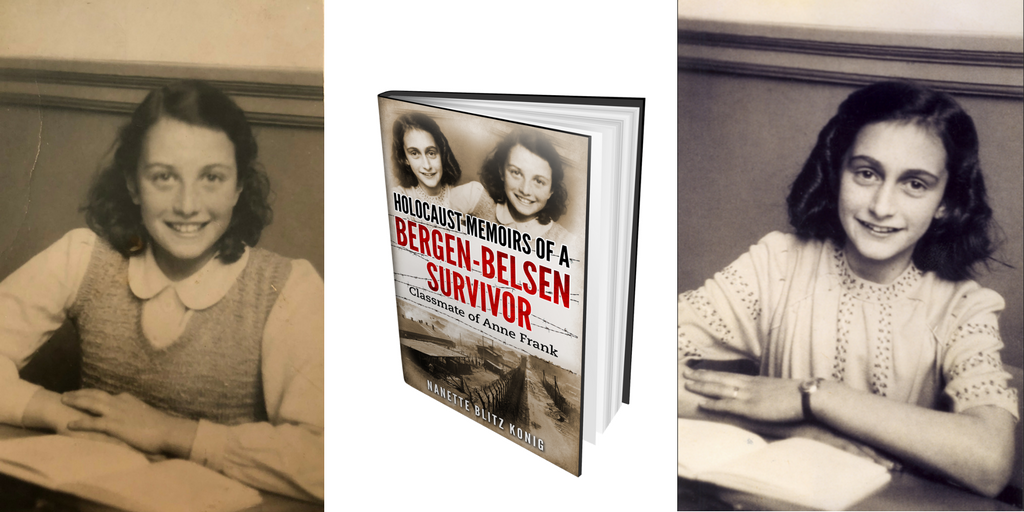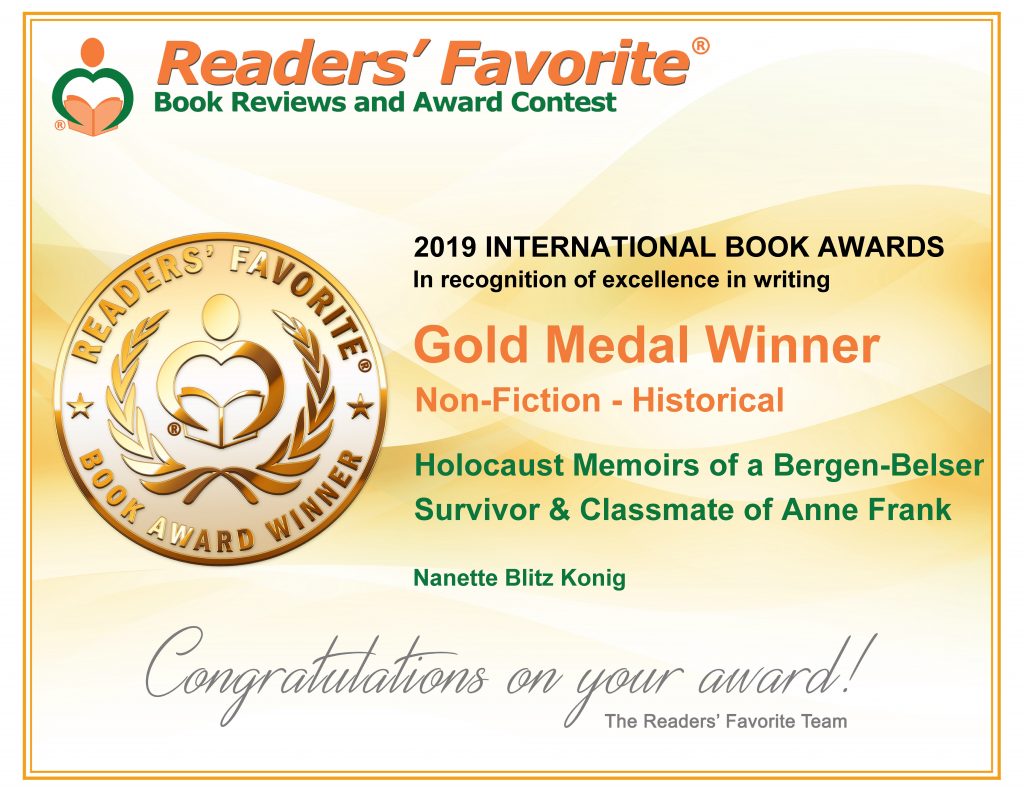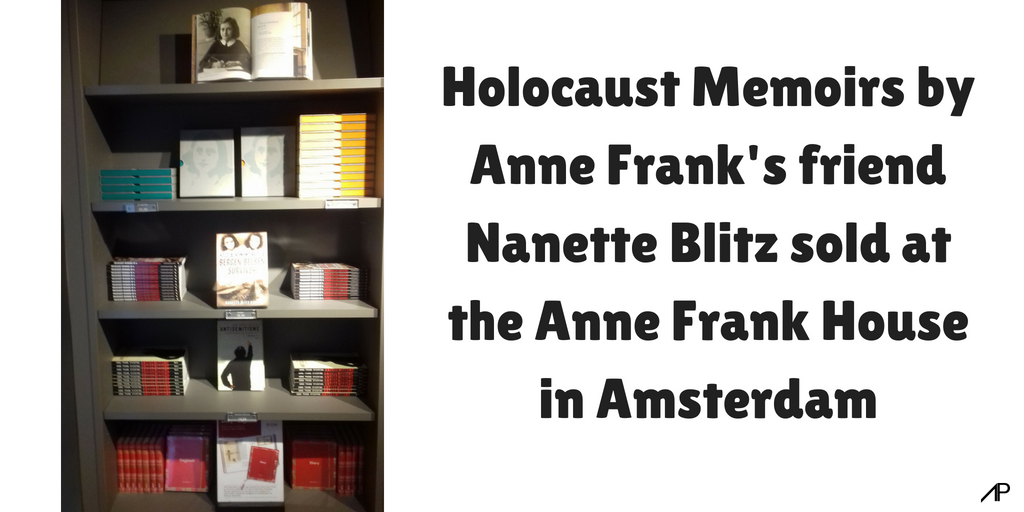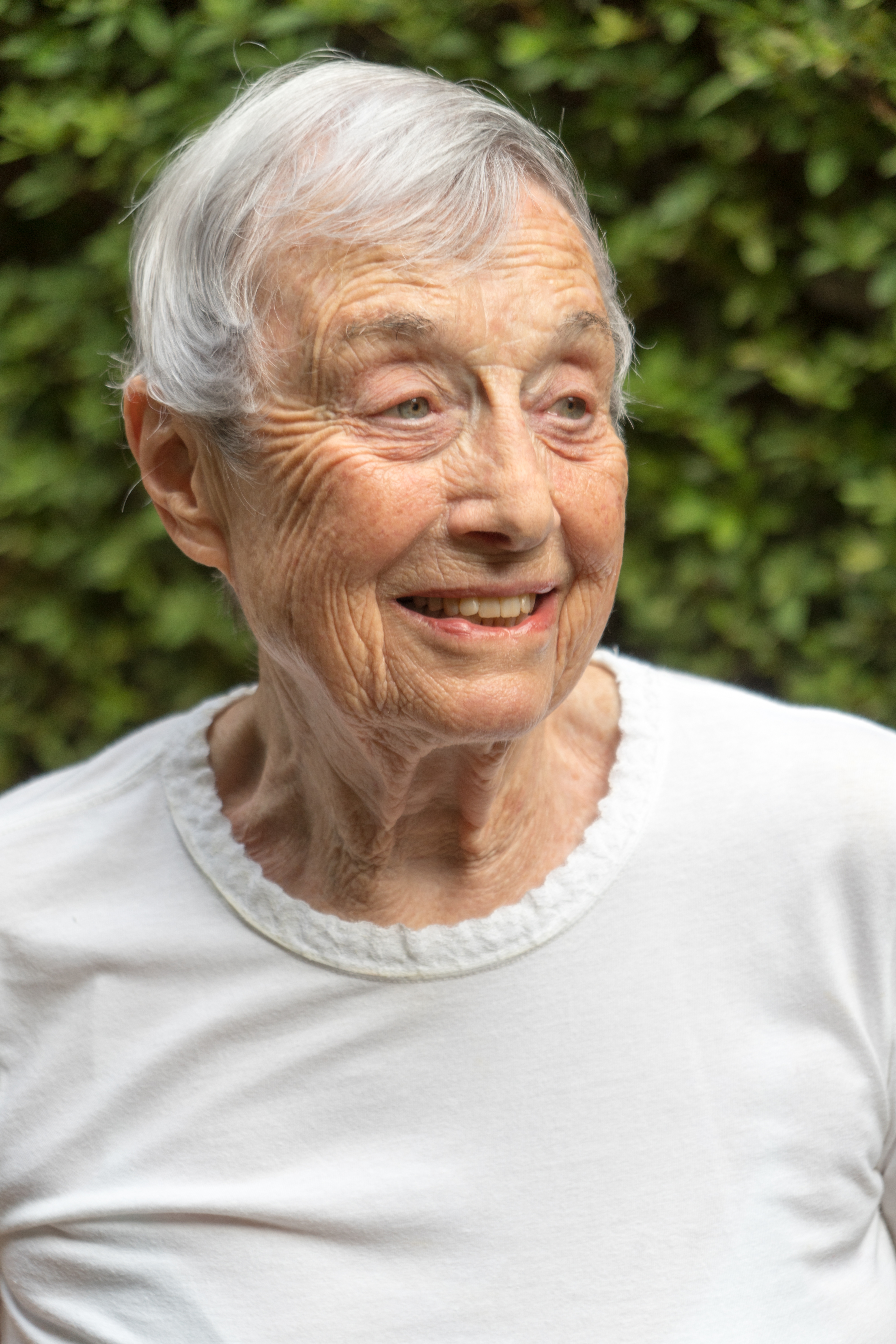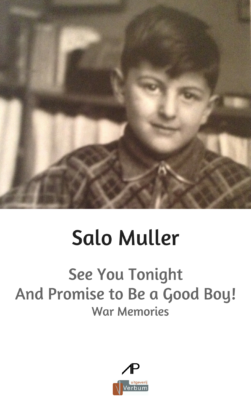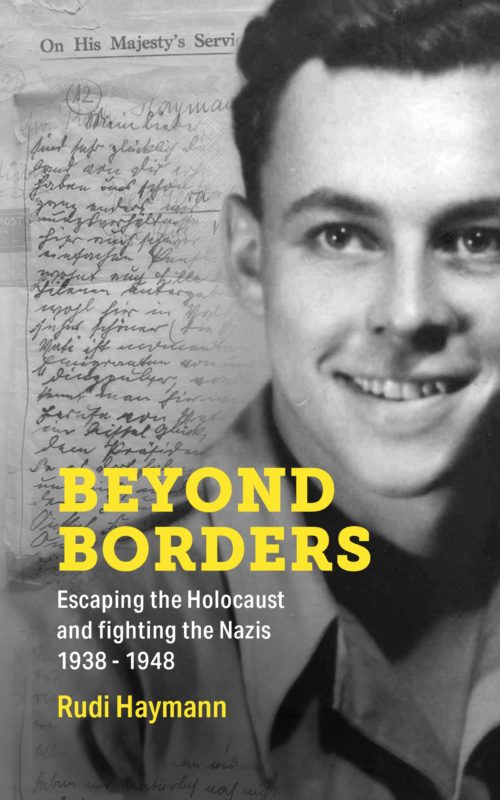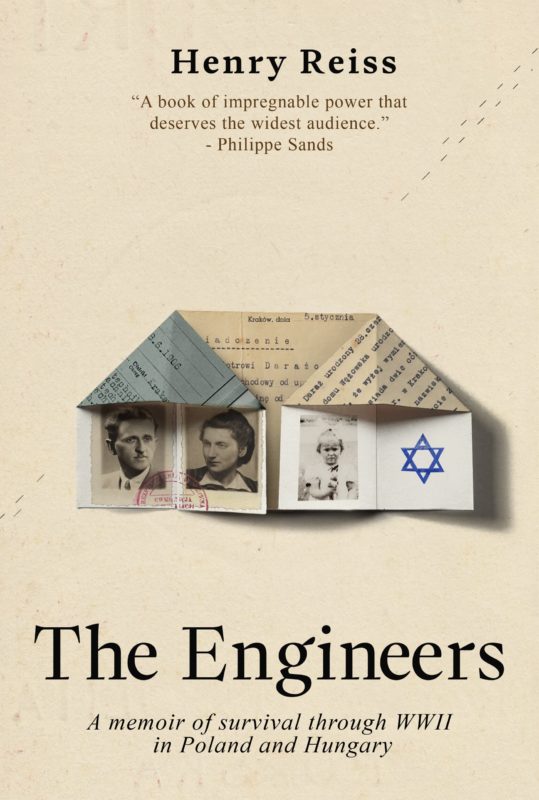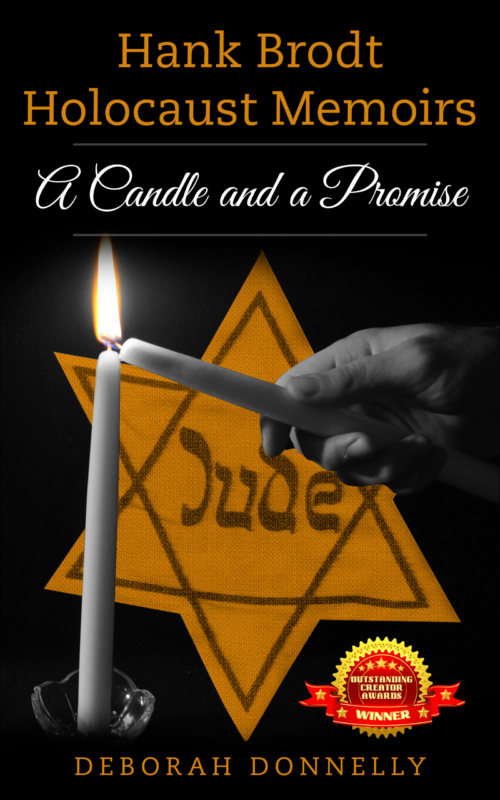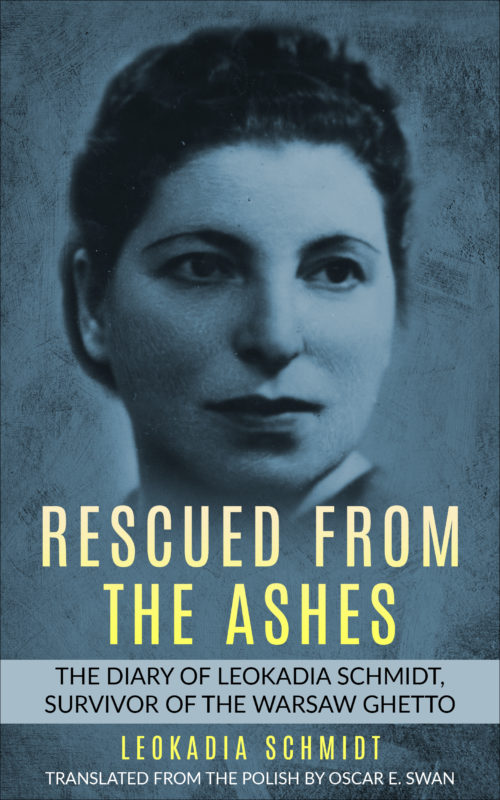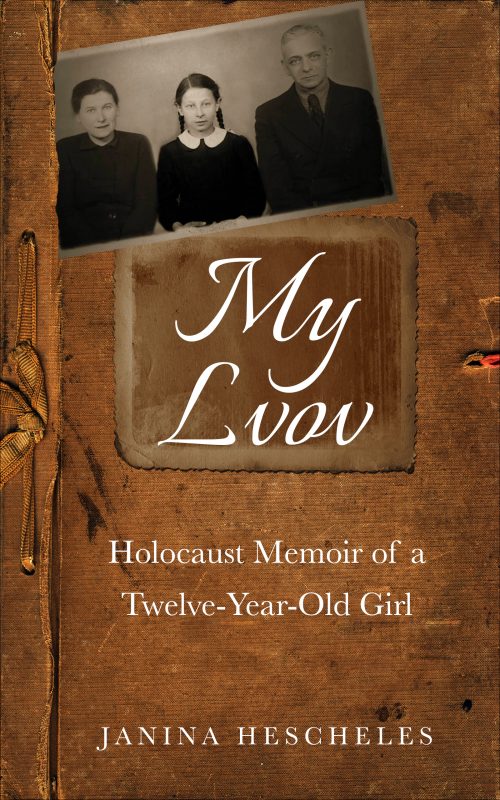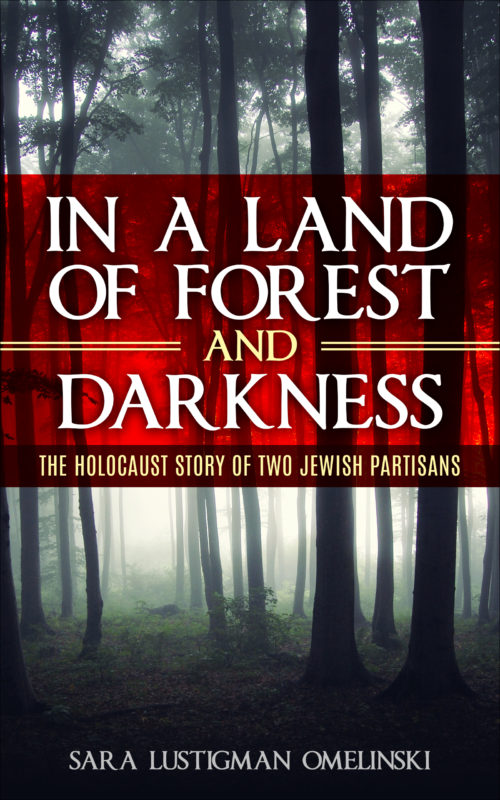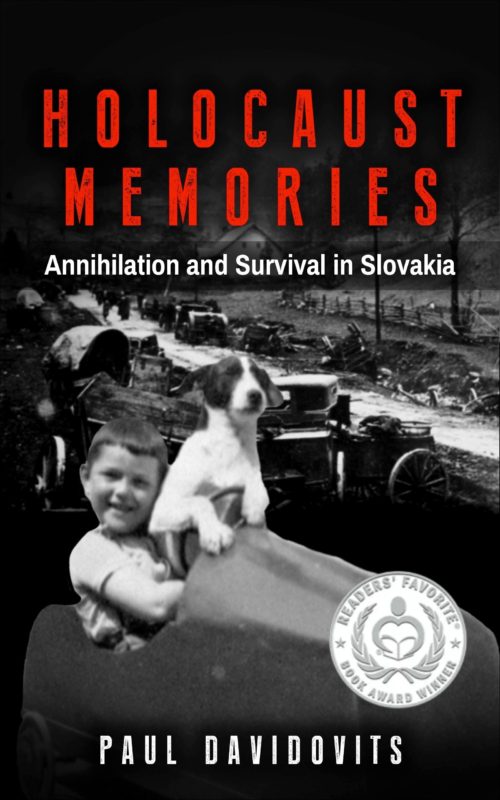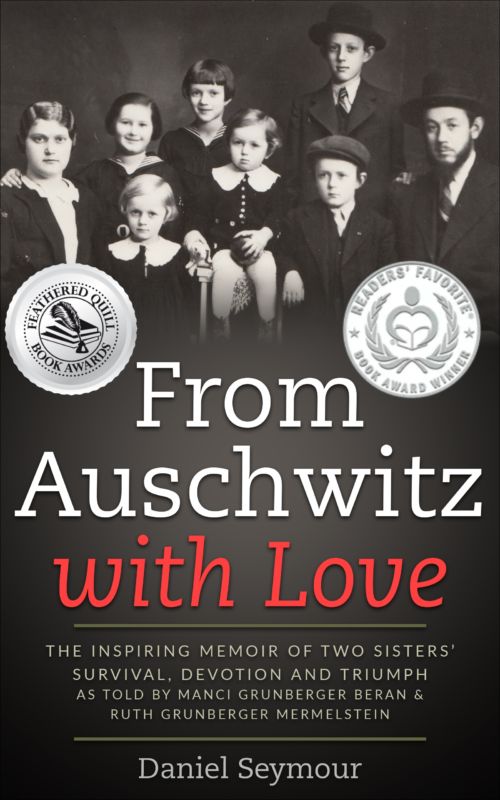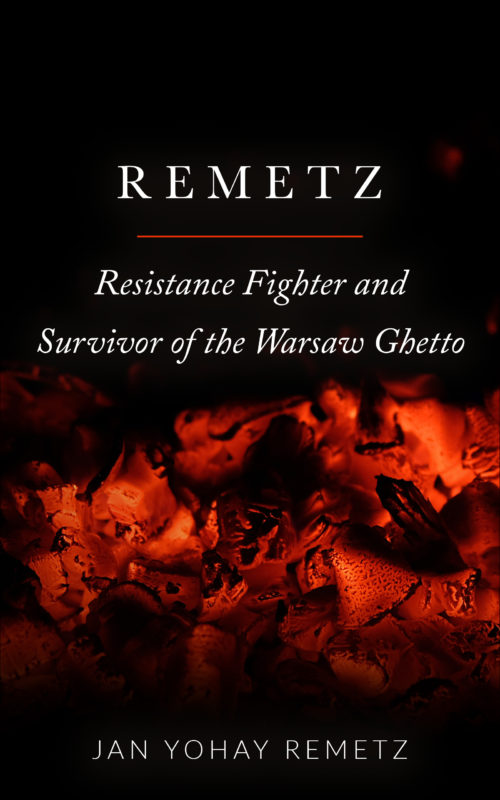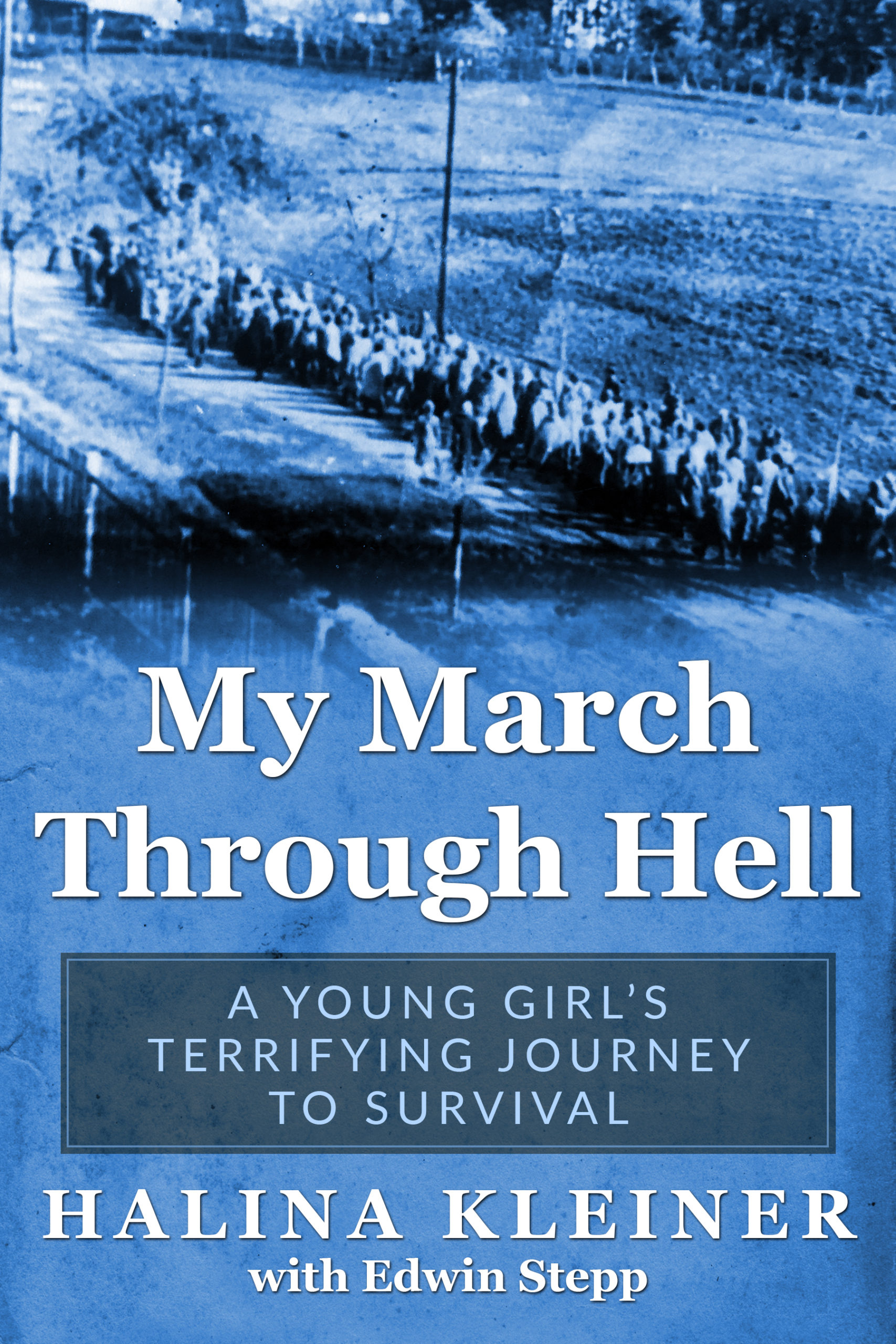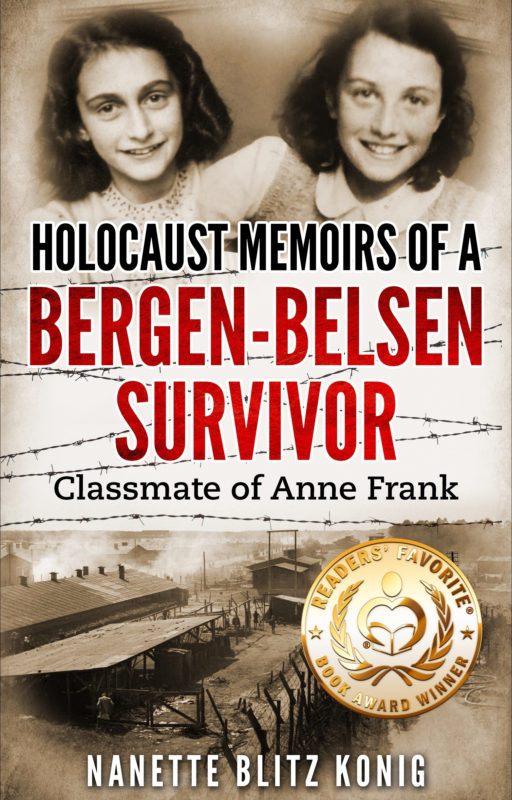
Readers' Favorite Gold Medal Award Winner 2019
A monument to the indestructible nature of the human spirit
Anne Frank's classmate Nanette Blitz Konig relates her amazing story of survival in Bergen-Belsen during WW2 when she was imprisoned by the Nazis.
In these compelling, award-winning Holocaust memoirs, Nanette Blitz Konig relates her amazing story of survival during the Second World War. Together with her family and millions of other Jews she was imprisoned by the Nazis. At Bergen-Belsen she had a minimum chance of survival.
Nanette (b. 1929) was a class mate of Anne Frank in the Jewish Lyceum of Amsterdam. They met again in the Bergen-Belsen concentration camp shortly before Anne Frank died. During these emotional encounters, Anne Frank revealed how the Frank family hid in the annex. She talked about their subsequent deportation, her experience in Auschwitz and her plans for her diary after the war.
This honest WW2 story, Holocaust Memoirs of a Bergen-Belsen Survivor and Classmate of Anne Frank, describes the hourly battle for survival under the brutal conditions in the camp imposed by the Nazi regime. It continues with her struggle to recover from the effects of starvation and tuberculosis after the war. Gradually she was able to restart her life, marry and build a family.
If you like Anne Frank’s diaries you will love these memoirs of Anne Frank’s Classmate
In late September 1943, a young Dutch-Jewish girl and her family had their whole lives abruptly overturned by a dreadful knock on the door, which soon escalated into a barrage of bangs that threatened to break it down altogether. Nazi soldiers had come to take them all away for internment into concentration camps, and there was nothing they could do to stop them.
This was just the beginning of Nanette Konig Blitz’s and her family’s harrowing convergence with Nazism, which she compellingly recounts in her Holocaust Memoirs of a Bergen-Belsen Survivor and Classmate of Anne Frank. Through her honest, stark and often intense prose, emerges a powerful re-telling of some of the darkest days of humanity as experienced by a young Dutch girl, whom to this day wonders if she survived perhaps by chance or by an actual miracle, but whose strong, determined, and incredibly brave character really shines through even today.
The memoir follows Nanette through all the defining phases of her life, with emphasis on her time spent in internment, and then on her recovery and on the consequences of the trauma. Her fight for survival, which later became one for re-building a life for herself, her striking reflections on the events, and her strong message are an incredible testimony of the times. They offer a unique perspective on how a child has strived to live through it and then grew into a woman, and they even shed some light on her former classmate and friend Anne Frank’s last days.
Things hadn’t always been so grave for Nanette, whom describes the Blitzes as a normal, affluent family living in the picturesque Amsterdam, where their father worked as a bank director. Nanette had a happy childhood, during which she grew up as an independent, if only slightly mischievous child; she went to public school, played many sports, and especially loved gymnastics and reading. Despite the tragic event of her younger brother’s passing at only four years old, most of what she remembers from those times is filled with laughter, smiles, lightness and pride for her parents and brothers, whom she loved dearly.
Of Nanette’s childhood, however, not much remains, but what did is now featured in her memoir – some drawings she made as a child, featuring typically Dutch landscapes of windmills and colourful flower fields, or a florist pushing a trolley of tulips; her school book, which contained her memories from elementary school, and which was salvaged by her neighbours after she and her family were taken away; and some simple black-and-white photographs. There’s Nanette as a baby in a classic portrait from the time, dressed in white and with slightly undulated hair, there’s an ordinary school picture from her elementary school class, and there’s one in which she and some of her classmates are dressed in traditional Dutch costumes. These are all familiar scenes, which would usually make most people contentedly nostalgic for their past, but, for Nanette, things are different. Without those pictures, she sometimes still wonders if her childhood memories were even real, and if there actually was a time in which she and her family were just living an ordinary and happy life together. These photographs are the only proof that they have indeed happened, that she did have a life before Nazism, despite how hard it became to believe it after all she had been through.
In fact, despite the normalcy of her childhood, more sinister things were afoot, and the political climate was quickly changing into a much more hostile one. Holocaust Memoirs grippingly relives the impact and the impressions that historical events had on the author’s life, and masterfully depicts how Dutch Jews were stripped of their freedom bit by bit, but relentlessly so, reaching the point in which Jewish children were forced to leave their schools and to be grouped together in special ones.
Nanette’s forced transfer to an all-Jew school, despite everything, made her feel as if she had found the harmony and humanity that were quickly disappearing from the world in the bond she developed with her classmates. Among them was Anne Frank, whose innate charisma and lively nature clearly emerge from Nanette’s affectionate portrayal of her. From this time, we can recognise the school photographs of both Nanette and Anne, both looking so similar, so young and full of life, and it’s concurrently hard to believe and heart-breaking to know that they would soon be subjected to an abysmal treatment, and that only one of them would make it out alive.
This award-winning memoir gives fresh impetus to the cause of those who oppose genocide in all its forms
The memoir even features Anne’s thirteen birthday party, which the author attended, and during which Anne received her then unassuming, but soon beloved diary. As Nanette paints this immersive, nostalgically bittersweet picture, the threat of what was to come ominously looms over it. The sickening abnormality of this, as opposed to the joy of a birthday party, makes it clear that it should’ve never had any business in the life of a child, of a human, and its unfairness is almost unbearable. It’s a unique perspective not only of a key moment in the life of Anne Frank, but also in that of a young teenager from those times – a modest snack among friends, a Rin Tin Tin movie taken out of its storage can, the brooch she gifted Anne – everything gives the reader a glimpse of the path their lives were supposed to follow, had they not been so violently derailed from it by what was to come.
Regrettably, this was not the case, and more and more Jewish people started to vanish, nobody knew if deported, on the run, or in hiding. After much fear and anguish, the day came when the Blitz family received that firm knock on the door. Nanette recalls being deafened by the sound of her own heartbeat as the Nazis stormed aggressively into her home, and, before she knew it, they were forced out.
The memoir follows Nanette first into the transitional camp of Westerbork, where, due to the twisted illusion of safety crafted to placate Jewish people and make them cooperate, they hoped they would get to stay. For a while, it seemed possible, but then this hope was crushed, and they were sent to the German Bergen-Belsen concentration camp.
During this jarring train journey, Nanette remembers seeing her memories flash by, and wondering if she would ever be that happy again. Once the train stopped and the prisoners stepped out of it, however, she felt the shock of her new reality as if she had been electrocuted. Everyone had to step into a line, lowering their eyes, as they quickly acknowledged that nothing was keeping the soldiers from killing them where they stood, and that their lives had, then and there, turned into a constant fight for survival. She marks this as a defining moment, as the beginning of their dehumanization and loss of dignity, and the memories of her normal life already felt from a distant past.
A monument to the indestructible nature of the human spirit
From here on, Nanette’s tale gets increasingly gut-wrenching, evoking images of utter brutality in a deeply immersive way; yet, her hourly struggle to stay alive is still interspersed with her touching reflections, such as her realisation that, despite it being in an area full of trees and fields, no bird used to ever fly or chirp above the camp, as if Mother Nature herself was too appalled by this hell on earth to react with anything but mute consternation.
In a haunting crescendo, Holocaust Memoirs takes us back to when she kept going even as things worsened, as she lost her father, as her mother and brother got deported to other camps, and as hunger and illnesses kept increasing at an alarmingly rapid pace. Nanette relieves all the occasions in which she narrowly escaped death, and mentions infamous officials such as Josef Kramer, also known as the “Beast of Belsen” due to his unmatchable cruelty, and Irma Grese, whose brutality and sadism rapidly made her notorious among the inmates. Yet, Nanette also states that these were far from being isolated cases. In such an environment, the constant dehumanisation, her narrow escapes from death, the tumultuous fate of her family, her living conditions, and the potent shock of being treated as if she weren’t even a person threatened to make her lose all sense of reality.
Then, through barbed wire, she saw her old classmate Anne Frank in another part of the camp. Suddenly she couldn’t think about anything else but meeting her, until one day she risked her life to sneak in the area where she was confined. In an incredibly moving encounter, the two girls recognised each other and embraced in what Nanette describes as a clamour for humanity. Both were emaciated, so different from the lively children they once were, but they talked about what had happened to each other and then about Anne’s diary, which she hoped she would publish one day. The magic of this reunion made them both dream of a future in which all the nightmares they were living would be over, putting aside the fact that such a future seemed then completely unbelievable. Tragically, this joy didn’t last, as Anne soon succumbed to her illness. Nanette was left alone to struggle to survive once again, with her living conditions worsening more and more every day, until finally the liberation occurred.
Shortly after Anne Frank died at Bergen Belsen, the English freed the camp. Her friend and schoolmate Nanette Blitz lived to tell her story
The account of these events is another striking portrayal of the times, of which the British soldiers that came to aid them are at the front. The horror in their eyes and their utmost disbelief for what they were seeing was the appropriate juxtaposition to the cruel mannerism of the Nazi soldiers and, even more so, of the cold, unperturbed way in which Kramer paraded the liberators around the camp as if to show off its functionality.
The memoir then follows Nanette in the years she had to spend recovering from the physical repercussions of her time in the camps, as well as coming to terms with the news that she had lost all her immediate family. It almost drove her to madness, but she showed her strength and resilience once more, and, by starting to talk about what she had been through, she slowly started to heal. During this time, she was also visited by Anne’s father Otto in another poignant moment, and they also discussed Anne’s diary, of which he later gifted her a printed copy.
After three whole years spent in a sanatorium, having had almost half of her life dictated by Nazism and its repercussions, Nanette got better and started building a life for herself in what cannot be called anything but another astonishing show of character. Her journey into adulthood, independence, and then love, marriage and motherhood, is one of the most compelling parts of the novel for its inspiring content, even more so when put in the contest of the profound traumas that would scar and affect her for the rest of her life.
Nanette’s remarkable character, which so strikingly stands out in the memoir, is what still defines her today, as she has now become a voice for all those that were silenced, including her mother, father and brother, and for all those that are at risk of becoming the next victims of ignorance and prejudice. Her memoir is thus much more than her already weighty testimony – it’s a profound and earnest assertion of the true value of life, freedom and tolerance, in front of which she urges for nothing else to ever prevail again.
No Asylum Screening in Solihull
Otto Frank’s recently discovered letters reveal new information about the family’s struggle to obtain visas to save themselves from the clutches of the Nazis. This film can be regarded as something of a prequel to Anne’s iconic diary. Four Holocaust survivors, Eva Schloss (Anne Frank’s stepsister), Nanette Blitz Konig, Tomi Reichenthal and Mindu Hornick, play a major role in the film ‘No Asylum’. The first screenings took place in the Solihull School.
No Asylum Programme – Solihull
Further reading on Holocaust Memoirs
Outcry Holocaust Memoirs by Manny Steinberg, The Mission of Abbe Glasberg by Lucien Lazare, See You Tonight by Salo Muller, Among the Reeds by Tammy Bottner, The Dead Years by Joseph Schupack, Hank Brodt Holocaust memoirs by Deborah Donnelly, Rescued from the Ashes by Leokadia Schmidt
Should you have written a Holocaust memoir yourself, please have a look at our Author Services page.



